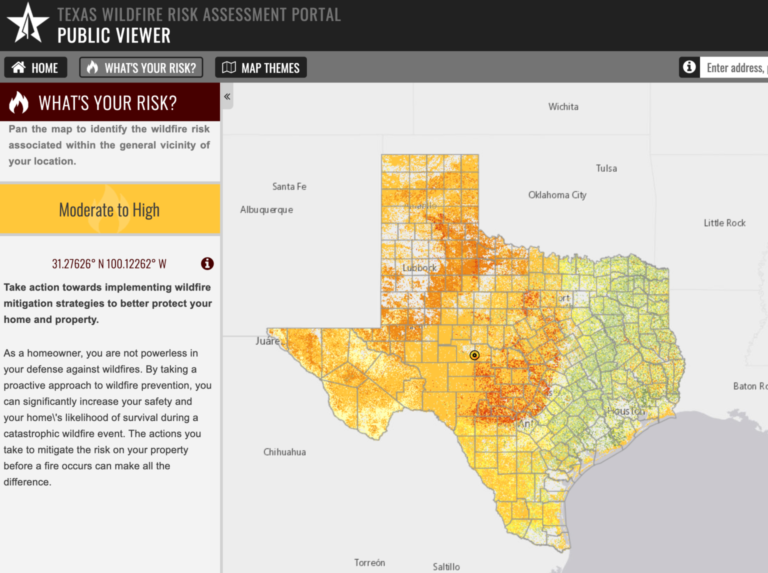Flood Risk Analysis: Innovative Techniques for Insurers
Flood risk analysis has become crucial in a world increasingly affected by climate-related risks, influencing how insurance pricing is determined. As insurers face the challenge of providing adequate flood coverage, innovative companies like 7Analytics offer groundbreaking methodologies to enhance risk assessment. By utilizing advanced hydrology and data science techniques, these firms empower private insurers to navigate previously untouchable markets with confidence. With the National Flood Insurance Program reforming its pricing strategies, the need for accurate flood risk analysis has never been more pressing. This modern approach not only aids in fair pricing but also helps close the flood insurance gap, ensuring that vulnerable communities receive the protection they need.
Assessing the likelihood and impact of flooding is essential for developing effective risk management strategies in the insurance sector. Alternative terms such as flood hazard assessment and inundation risk evaluation highlight the importance of understanding these climate-related challenges. As private insurers adapt to shifting environmental patterns, enhanced methodologies in flood risk analysis can facilitate better decision-making and policy development. The integration of innovative data analytics and hydrological studies can significantly improve the accuracy of flood coverage offerings. By embracing these advanced techniques, the insurance industry can effectively mitigate risks associated with natural disasters and protect communities from potential losses.
Understanding Flood Risk Analysis in Insurance
Flood risk analysis is a critical component for insurers looking to offer competitive flood coverage in today’s market. As climate-related risks escalate, understanding the nuances of flood dynamics becomes essential for accurate insurance pricing. With methodologies like those pioneered by 7Analytics, insurers can leverage granular data to identify high-risk areas and develop tailored products that meet the needs of potential policyholders. This level of analysis not only informs pricing strategies but also enhances the overall risk assessment process, allowing insurers to make more informed decisions.
The significance of flood risk analysis extends beyond mere pricing; it plays a vital role in determining how private insurers can sustainably enter markets previously deemed too risky. By utilizing advanced hydrological and geological data, insurers can pinpoint insurable areas, thereby increasing access to flood coverage for homeowners and businesses alike. This approach not only aids in closing the flood protection gap but also fosters a more resilient insurance market capable of adapting to future climate challenges.
The Role of 7Analytics in Enhancing Flood Coverage
7Analytics, founded by seasoned oil and gas geologists, brings a wealth of expertise in analyzing complex subsurface conditions to the insurance sector. Their innovative methodologies are transforming how insurers assess flood risk and determine coverage options. By focusing on the analysis of streams, culverts, and land use changes, 7Analytics provides a granular understanding of flood dynamics that is vital for accurate pricing and risk assessment. This refined approach can help private insurers identify profitable opportunities in areas that have traditionally been overlooked.
Moreover, 7Analytics’ commitment to leveraging data science in flood risk analysis not only aids insurers in making informed underwriting decisions but also enhances the overall resilience of communities at risk. By collaborating with insurers, 7Analytics aims to close the flood protection gap, offering insights that allow for more equitable pricing structures and improved access to flood coverage. This strategic partnership between technology and insurance is crucial in adapting to the rising tide of climate-related risks.
Innovative Solutions for Climate-Related Risks
The increasing prevalence of climate-related risks necessitates innovative solutions in the insurance industry. Traditional methods of evaluating flood risk are proving inadequate, prompting calls for a reassessment of how insurers approach underwriting and pricing. By integrating advanced analytics and technology, insurers can gain a clearer picture of potential exposures and develop strategies that are both profitable and responsible. This shift is essential for ensuring that flood coverage remains accessible and reflective of actual risk.
Embracing new technologies, such as those offered by firms like 7Analytics, enables insurers to adapt to the challenges posed by climate change. These innovations allow for a more dynamic approach to risk management, helping insurers to identify patterns and trends that may not be apparent through conventional analysis. By staying ahead of the curve, insurers can better protect their portfolios while also providing critical coverage to those in flood-prone areas.
The Importance of Accurate Insurance Pricing
Accurate insurance pricing is foundational to a sustainable insurance market, especially in areas susceptible to flooding. As climate-related risks evolve, the methods used to price insurance must also adapt. Companies like 7Analytics are at the forefront of this transformation, utilizing sophisticated data analysis techniques to deliver insights that ensure pricing is fair and reflective of individual property risks. This not only protects the insurer’s bottom line but also fosters trust among policyholders.
Moreover, as the National Flood Insurance Program (NFIP) continues to reform its pricing strategies, private insurers have an opportunity to fill the gaps left by government programs. By adopting data-driven practices that inform risk assessment and pricing, insurers can create products that meet the unique needs of their clients while also promoting financial stability within the industry. Accurate pricing is crucial, as it determines the viability of flood coverage for many homeowners and businesses.
Leveraging Data for Risk Mitigation
In the face of escalating climate-related risks, leveraging data for risk mitigation has never been more critical. The use of sophisticated analytics tools enables insurers to better understand the complexities of flood risk and adjust their offerings accordingly. By analyzing historical data alongside real-time environmental changes, insurers can craft policies that not only protect their financial interests but also provide meaningful coverage to policyholders in flood-prone areas.
7Analytics exemplifies this approach, using its expertise to refine risk modeling and enhance the underwriting process. By focusing on detailed flood risk analysis, private insurers can identify emerging trends and make proactive adjustments to their coverage options. This data-driven strategy is essential for fostering resilience in communities at risk, ensuring that both insurers and policyholders can navigate the challenges posed by climate change.
Closing the Flood Protection Gap
The flood protection gap remains a pressing challenge for both insurers and communities vulnerable to flooding. Although more private insurers are beginning to offer flood coverage, many areas still lack adequate protection due to perceived risks and outdated assessment methods. By incorporating advanced data analytics into their risk evaluation processes, insurers can identify opportunities to provide coverage in previously underserved regions, thereby helping to close this gap.
7Analytics plays a pivotal role in this effort by providing insurers with the tools and insights needed to accurately assess flood risk. With a focus on granular data and innovative analysis techniques, the company empowers insurers to make informed decisions about where and how to offer coverage. This not only expands access to essential flood insurance but also promotes a more resilient insurance landscape capable of adapting to future climate challenges.
The Future of Flood Coverage in Insurance
The future of flood coverage in insurance is poised for transformation as data analytics and innovative methodologies become more prevalent. As climate-related risks intensify, insurers must adapt by integrating new technologies into their risk assessment frameworks. This evolution is critical for ensuring that flood coverage remains viable and accessible in the face of changing environmental conditions.
7Analytics is leading the charge in this evolution, demonstrating how targeted data analysis can reshape the insurance landscape. By focusing on the unique challenges posed by flooding, the company provides insurers with the insights necessary to refine their pricing strategies and coverage options. As more insurers recognize the benefits of leveraging advanced analytics, the future of flood coverage looks promising, with enhanced protection for communities at risk.
Enhancing Urban Resilience Through Flood Risk Analysis
Urban areas are particularly vulnerable to flooding, making effective flood risk analysis crucial for enhancing resilience. As cities grow and climate-related risks escalate, the demand for comprehensive flood coverage becomes increasingly urgent. Insurers that invest in innovative data analysis and risk assessment methodologies can better serve urban populations, providing them with the protection they need against flooding.
Through collaborations with firms like 7Analytics, insurers can gain insights into urban flood dynamics that inform their underwriting decisions. By analyzing factors such as land use, drainage systems, and historical flood data, insurers can develop targeted strategies that address the unique challenges of urban flooding. This proactive approach not only improves risk management but also fosters community resilience in the face of climate change.
The Role of Private Insurers in Flood Coverage
Private insurers play a crucial role in the landscape of flood coverage, especially as the National Flood Insurance Program (NFIP) undergoes reforms. While the NFIP has historically dominated flood insurance, the increasing costs associated with it may drive policyholders toward private options. By leveraging advanced data analytics, private insurers can identify risks more accurately and develop competitive products that meet the needs of consumers.
The collaboration between private insurers and data-driven firms like 7Analytics can enhance the overall flood insurance market. By utilizing sophisticated risk assessment tools, private insurers can offer comprehensive coverage solutions that are informed by real-time data and predictive analytics. This partnership not only benefits the insurers but also provides policyholders with greater access to flood coverage, ultimately leading to a more resilient insurance framework.
Frequently Asked Questions
How does flood risk analysis impact insurance pricing?
Flood risk analysis is crucial for determining insurance pricing, as it allows insurers to assess potential flood hazards more accurately. By leveraging advanced data tools from companies like 7Analytics, insurers can refine their pricing strategies, ensuring premiums reflect the true risk of climate-related events. This improved understanding helps both insurers and policyholders navigate the complexities of flood coverage.
What role does 7Analytics play in flood risk analysis for insurers?
7Analytics specializes in flood risk analysis by utilizing hydrology, geology, and data science to create precise flood risk data tools. Their innovative approach, rooted in oil and gas expertise, helps private insurers identify insurable areas that may have been previously overlooked, thereby enhancing the overall effectiveness of flood coverage strategies.
Why is flood risk analysis important for private insurers?
Flood risk analysis is vital for private insurers as it equips them with the detailed insights needed to price flood coverage accurately. As climate-related risks continue to rise, integrating advanced analytics and methodologies, like those from 7Analytics, enables insurers to offer competitive rates while managing their risk exposure effectively.
How does climate-related risks affect flood coverage options?
Climate-related risks significantly influence flood coverage options as they alter traditional risk assessments. Insurers must adapt their flood risk analysis to account for changing weather patterns, urban development, and population migration. This evolving landscape demands innovative approaches, such as those provided by firms like 7Analytics, to ensure adequate flood coverage is available.
What is the National Flood Insurance Program (NFIP) and its relation to flood risk analysis?
The National Flood Insurance Program (NFIP) provides flood insurance to property owners, but its pricing methodology has come under scrutiny. With the implementation of Risk Rating 2.0, the NFIP aims for more equitable rates based on flood risk analysis. However, private insurers are increasingly looking to advanced data analytics, like those from 7Analytics, to complement or compete with NFIP offerings.
How can improved flood risk analysis benefit homeowners seeking flood insurance?
Improved flood risk analysis benefits homeowners by providing them with more accurate assessments of their flood risk, which can lead to fairer insurance pricing. As private insurers adopt advanced methodologies from companies like 7Analytics, homeowners may find more tailored flood coverage options that reflect their actual risk, potentially resulting in lower premiums and better protection.
What are the challenges in flood risk analysis that private insurers face?
Private insurers face several challenges in flood risk analysis, including outdated methodologies and the need for more granular data to accurately assess flood risks. The integration of innovative tools and technologies, such as those developed by 7Analytics, can help address these challenges by providing precise data that informs better underwriting and flood coverage decisions.
How does data science enhance flood risk analysis for insurance purposes?
Data science enhances flood risk analysis by enabling insurers to process and analyze large datasets that reflect environmental conditions, historical flood events, and urban development trends. Tools developed by data science firms, such as 7Analytics, allow for high-precision modeling of flood risks, leading to more accurate insurance pricing and better flood coverage options for policyholders.
What innovations are transforming flood risk analysis in the insurance industry?
Innovations transforming flood risk analysis in the insurance industry include the use of advanced data analytics, machine learning, and hydrological modeling. Companies like 7Analytics are at the forefront of these changes, providing insurers with actionable insights that improve their ability to assess flood risks and offer effective flood coverage solutions.
What is the future of flood coverage as flood risk analysis evolves?
As flood risk analysis evolves, the future of flood coverage is likely to include more personalized insurance solutions, driven by precise data insights from advanced analytics. Private insurers are expected to increasingly adopt methodologies from firms like 7Analytics, enabling them to better understand and manage flood risks, ultimately leading to more accessible and affordable flood coverage for homeowners.
| Key Points | Details |
|---|---|
| Importance of Data Analysis | Precise tweet analysis is vital for fair insurance pricing amid climate risks. |
| 7Analytics’ Methodology | Utilizes hydrology, geology, and data science to create flood risk tools. |
| Expertise in Flood Analysis | Led by experienced oil and gas geologists, offering refined flood risk insights. |
| Addressing Insurance Gaps | 7Analytics aims to help close the U.S. flood protection gap for insurers. |
| NFIP Pricing Methodology | Recent reforms have raised concerns about increasing premiums. |
| Need for Innovation | New technologies and methods are necessary to improve flood risk assessment. |
Summary
Flood risk analysis is essential in today’s climate, as it ensures accurate insurance pricing and coverage. The insights from 7Analytics demonstrate how advanced data methodologies can identify profitable flood insurance opportunities in previously overlooked areas. By leveraging expertise from industries like oil and gas, insurers can enhance their flood risk assessments. As the NFIP continues to adjust its pricing strategies, private insurers must adopt innovative solutions to meet the evolving challenges of flood risk. Overall, embracing new technologies is crucial for closing the flood insurance gap and ensuring communities are better protected against climate-related flooding.







